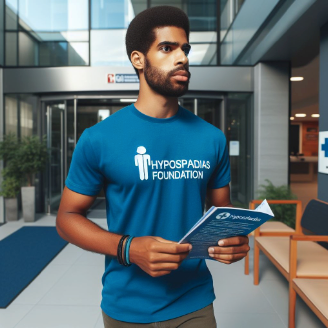In the last few years, we have been treating a lot of adults coming with unrepaired primary hypospadias wanting to get hypospadias repair surgery done. Adult Hypospadias repair surgery is a very different ballgame from child hypospadias surgery. Traditionally clinical outcomes for adult hypospadias surgery have not been as good with pediatric hypospadias surgeries as:
1. Chances of infection are high
2. Due to erections at night, chances of dehiscence are high
After having done hundreds of adult hypospadias surgeries, we can clearly see differences in adult hypospadias and children with hypospadias. Whether it is the size of penis, overall anatomy of tissues, pre-surgery preparation, intra-operative instruments and stitches or post-op care- everything is very different. Over the years, we have understood various steps which should be done to decrease risk of hypospadias surgery complications in adults. This has led to improved results in adult hypospadias surgeries.

Our Stepwise Adult Hypospadias Surgery and Care protocol:
1.Pre- surgery counselling: We make sure that expectations are set right. While hypospadias surgery can correct the curvature, cosmetic appearance and urine flow issues, hypospadias surgery cannot increase the size of penis or improve fertility. In our hypospadias clinic, after we have examined the adult hypospadias patients, we discuss what they want and the propose the outlined treatment plan.
2. Pre-surgery tests: Before hypospadias surgery is planned, we like to do blood tests for ruling our diabetes, check out any risks for anesthesia or any infection. We also like to do a urine routine test to check for any infection. Chest Xray and ECG test are done to make sure that the person is fit for anesthesia. We also take a consult from a physician to make sure that the
person is fit to undergo anesthesia for hypospadias surgery.
3. Pre-surgery preparation: We start a betadine scrub bath for cleaning pubic area twice daily 2 days before surgery. Pubic hairs are not shaved as shaving 1-2 days before surgery can lead to higher risk of infections. Typically, we trim the hair in the OT with a hair trimmer.
4. Surgery: General anesthesia with epidural block is given. All aseptic precautions are taken to prevent infection. Special microsurgery adult hypospadias instruments are used. Sutures used are also absorbable ones. Care is taken to handle tissues, nerves and blood vessels very gently. Dressing is done to support the penis and catheters are secured properly. Once the patient is out of anesthesia, we shift out to recovery room and thenward.
5. Post-Surgery care: We give IV antibiotics for 2 days and also open the dressing on day 5 to check for any infection. For some cases, we also advise hyperbaric oxygen therapy for 5-7 days. Catheter in adult urethroplasty is kept for a longer period as healing is slow. We typically keep two catheters – a suprapubic catheter and a urethral catheter. Both are kept for 3 weeks.
6. Follow-up: After urethral catheter removal, we typically clamp the suprapubic catheter and once the patient is passing urine from urethral well, we remove the suprapubic catheter after 2 days.
By following this protocol, our results in adult primary hypospadias surgeries have become the best in India and amongst the top centres in the world. Our success rates in Adult Hypospadias Surgery are over 95% in primary one or two stage repair with very less number of people needing further surgeries. At Hypospadias Foundation, a dedicated team of surgeons takes care of adult hypospadias. Dr A.K.Singal is a reputed and top hypospadias surgeon who has been doing hypospadias repair surgeries since 2006 and is rated amongst the best in the world for clinical results. Dr Ashwith Shenoy is a hypospadias surgeon who has deep experience in managing hypospadias. Both of them work closely giving best outcomes to adults with hypospadias. Given their team work and dedication to success rates in hypospadias, it is no surprise that people come from all over India and more than 20 countries to seek hypospadias treatment under their care.
Contact Form for Hypospadias Foundation
Please fill all clinical details and upload pictures and clinical summaries (if available)

